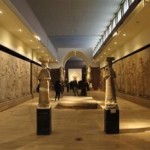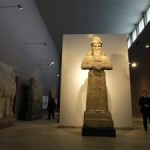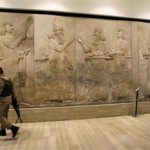So it turns out that the top bidder for the rat and rabbit was a Chinese art collector doing it out of patriotism with no intention to actually pay for the bronzes.
A Chinese art collector identified himself on Monday as the winning bidder in last week’s Paris auction for two sculptures looted from Beijing in the 1800s but said that, as a patriot, he had no intention of paying. […]
Cai Mingchao, a collector and adviser to a private foundation in China that seeks to retrieve looted treasures, said he successfully bid for the items which sold for 15 million euros ($20 million) each at an auction for the art collection of late designer Yves Saint Laurent.
The private foundation mentioned is the one that filed suit to prevent the sale, The Association for the Protection of Chinese Art in Europe.
No word yet from Christie’s on what they intend to do about it. Pierre Bergé says he’ll just keep them, but I wouldn’t be surprised if they called up the next highest bidder and offered them to him.
( :hattip: a loyal reader.)
Interesting side note: Victor Hugo vigorously protested the looting of the Summer Palace back in 1860 when it happened. A Chinese official has even cited Hugo in a press conference in an appeal to France to right this historic wrong.
Hugo wrote this in a letter to a French captain. See the link above for the full excerpt.
“One day two bandits entered the Summer Palace. One plundered, the other burned. Victory can be a thieving woman, or so it seems. The devastation of the Summer Palace was accomplished by the two victors acting jointly.
“Mixed up in all this is the name of Elgin, which inevitably calls to mind the Parthenon. What was done to the Parthenon was done to the Summer Palace, more thoroughly and better, so that nothing of it should be left. All the treasures of all our cathedrals put together could not equal this formidable and splendid museum of the Orient. It contained not only masterpieces of art, but masses of jewelry. What a great exploit, what a windfall! One of the two victors filled his pockets; when the other saw this he filled his coffers. And back they came to Europe, arm in arm, laughing away. Such is the story of the two bandits.
“We Europeans are the civilized ones, and for us the Chinese are the barbarians. This is what civilization has done to barbarism.
“Before history, one of the two bandits will be called France; the other will be called England. But I protest, and I thank you for giving me the opportunity! the crimes of those who lead are not the fault of those who are led; Governments are sometimes bandits, peoples never.
“The French empire has pocketed half of this victory, and today with a kind of proprietorial naivety it displays the splendid bric-a-brac of the Summer Palace. I hope that a day will come when France, delivered and cleansed, will return this booty to despoiled China.”
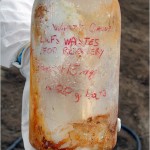 Clean-up personnel excavating the burial trenches at the Hanford nuclear site in Washington found the jug of historic Pu-239 in a concrete-lined safe.
Clean-up personnel excavating the burial trenches at the Hanford nuclear site in Washington found the jug of historic Pu-239 in a concrete-lined safe.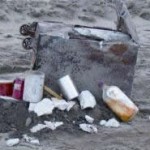 Researchers then found old shipping documents confirming transfers of spent reactor fuel from Oak Ridge to Hanford in 1944.
Researchers then found old shipping documents confirming transfers of spent reactor fuel from Oak Ridge to Hanford in 1944.